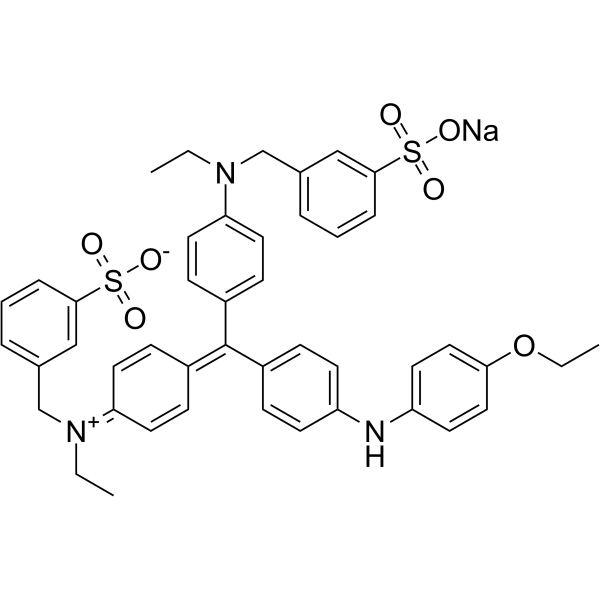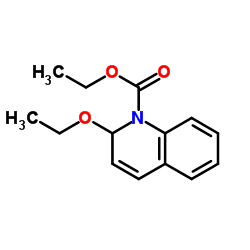Self-oligomerization and protein aggregation of alpha-synuclein in the presence of Coomassie Brilliant Blue.
D Lee, E K Lee, J H Lee, C S Chang, S R Paik
文献索引:Eur. J. Biochem. 268(2) , 295-301, (2001)
全文:HTML全文
摘要
alpha-Synuclein has been implicated in various neurodegenerative disorders, including Parkinson's and Alzheimer's diseases, by its participation in abnormal protein depositions. As the protein has been suggested to play a significant role in the formation of the deposits which might be responsible for neurodegeneration, there is a strong demand to screen for alpha-synuclein-interactive small molecules. In this report, Coomassie Brilliant Blue (CBB) interaction of alpha-synuclein has been investigated with respect to induction of protein self-oligomerization in the presence of the chemical coupling reagent N-(ethoxycarbonyl)-2-ethoxy-1,2-dihydroquinoline. Both CBB-G and CBB-R, which differ by only two methyl groups, induced the self-oligomerization of alpha-synuclein in a biphasic manner with optimal dye concentrations of 250 microM and 150 microM, respectively. The protein aggregates of alpha-synuclein induced by the dyes in the absence of the coupling reagent were analysed by electron microscopy. Whereas CBB-G induced formation of protein aggregates with a worm-like structure, CBB-R induced clear fibrilization of alpha-synuclein on a background of granular structures. CBB-R interacted with alpha-synuclein approximately twice as effectively as CBB-G (dissociation constants 0.63 microM and 1.37 microM, respectively). These dye interactions were independent from the acidic C-terminus of alpha-synuclein, which was reminiscent of the Alphabeta25-35 interaction of alpha-synuclein. However, the metal-catalysed oxidative self-oligomerization of alpha-synuclein in the presence of Cu2+/H2O2, which was augmented synergistically by Alphabeta25-35, was not affected by the dyes. This indicates that the dye binding site is also distinctive from the Alphabeta25-35 interaction site on alpha-synuclein. These biochemically specific interactions between alpha-synuclein and the dyes indicate that alpha-synuclein-interactive small molecules could provide a tool with which to approach development of diagnostic, preventive, or therapeutic strategies for various alpha-synuclein-related neurodegenerative disorders.
相关化合物
| 结构式 | 名称/CAS号 | 分子式 | 全部文献 |
|---|---|---|---|
 |
考马斯亮蓝R250
CAS:6104-59-2 |
C45H44N3NaO7S2 | |
 |
2-乙氧基-1-乙氧碳酰基-1,2-二氢喹啉
CAS:16357-59-8 |
C14H17NO3 |
|
Titer on chip: new analytical tool for influenza vaccine pot...
2014-01-01 [PLoS ONE 9(10) , e109616, (2014)] |
|
Rapid detection of proteins in polyacrylamide electrophoresi...
2012-01-01 [Methods Mol. Biol. 869 , 585-9, (2012)] |
|
Development of an affordable dye-stained microalbuminuria sc...
2009-05-01 [Nephrol. Dial. Transplant. 24(5) , 1485-90, (2009)] |
|
Reconfiguring the quorum-sensing regulator SdiA of Escherich...
2009-03-01 [Appl. Environ. Microbiol. 75 , 1703-16, (2009)] |
|
Lipopolysaccharide inhibits the channel activity of the P2X7...
2011-01-01 [Mediators Inflamm. 2011 , 152625, (2011)] |